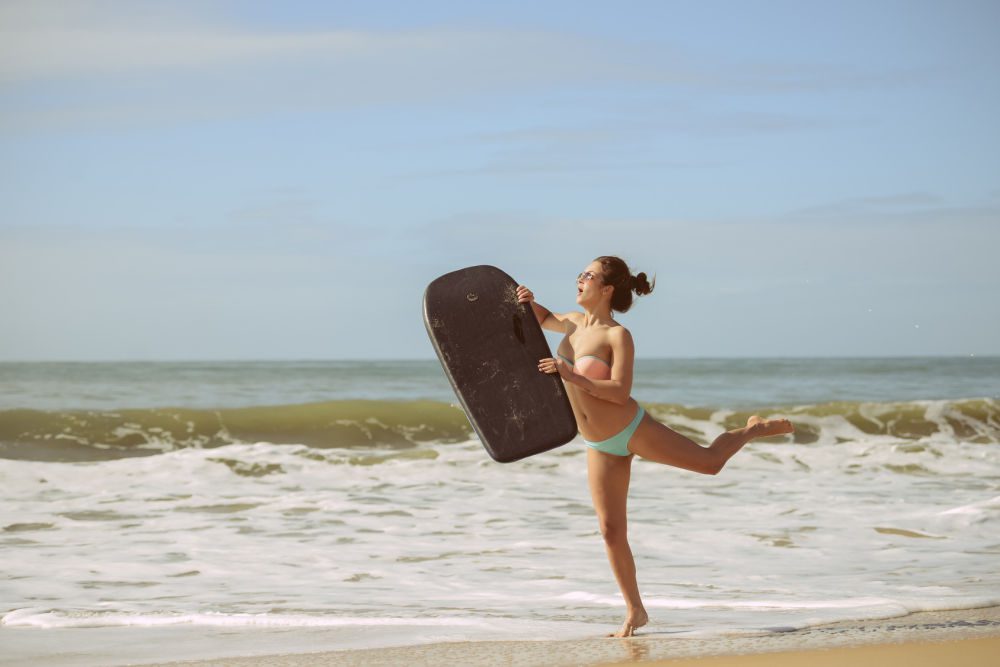
Like regular surf boards available on the market, bodyboards come in different shapes and sizes depending on the performance you are after, or your body type. Even if it looks cool, it doesn’t mean that it fits you and it might bring you only misery once you hit the waves.
Your board is like an extension of your body when you are out on the water and will help you develop as a rider. If your board comes with everything you need, it can be the best friend you ever had in the water.
Here is a short guide on how you can choose the perfect bodyboard for you:
- When choosing a body board, you have to consider the size of the board. A board’s height and weight will play a crucial role in the performance of the board once you are in the water and if it’s shorter in one way, it will prevent you from moving around in the water. When you shop for a bodyboard, measure it from your knees to your chin. If you are heavy, choose a board which comes with an extra width so it is easier to keep your balance
- If this is your first time buying a bodyboard, don’t go immediately to the top-of-the-line model because it won’t make your ride any different. Learn the features of your board and ask the advice of your friends, pros, or even the sales staff regarding the different boards available and their features
- It is also important to make sure the core of your bodyboard will be able to withstand any wave and help you develop as a rider. If you choose the wrong core, there is a tendency your board will not go the way you want it to. Experiment with both types of boards and pick the one which feels natural to you. Bodyboard makers often use two types of foam: polyethylene and polypropylene.
- Polyethylene or PE foams are often used in bodyboards because it provides the flexibility and control riders need. It is also more suited to use in colder waters and won’t break easily
- Polypropylene or PP foams are good for bodyboards used in warmer waters and for those looking for a lighter board. Since it is lighter, it is faster to control and gains speed easily. Some PP boards can even recover their old shape, adding more to its lifespan. If you would like to try using PP boards in colder waters, there is a tendency the ride will be uncontrollable, so it is not recommended for new users.
- The tail of your bodyboard must also be considered because it ensures that you can direct your board easily and execute different maneuvers. There are four types of tails used in bodyboards: narrow, wide, crescent and bat.
- Narrow tails provide riders the ease to change through moves since they are not as buoyant as wider tails
- Wider tails provide stability as users glide through the water
- Crescent tails provide users more edge in the water and control once the board gains speed
- Bat tails provide more drive for the rider and surface area to work with
Aside from these basic parts of a bodyboard that must be considered, you can also check out the other features of the bodyboard to help you choose.
Contents
Deck
What kind of deck material was used for the board? Normal decks come with 8 lbs. of PE material to provide flexibility. However, it can easily become worn out as time passes.
A crosslink can be a good alternative if you want a durable and cheaper deck.
Contours
Does the board have extra grooves that would help with control, grip and speed? Get a board with contours, especially if you are a new rider or if you ride larger waves which can get tricky to ride.
Slicks
What is the material of your bodyboard’s slicks or bottom? This is the part of the bodyboard that touches the water as you ride along. You can choose from either Surlyn slicks or HDPE slicks when choosing your bodyboard.
Surlyn slicks are durable and prevent the development of creases that create drag. HDPE slicks are good for new riders as they are lighter and requires lesser pressure.
Channels
This part is located at the bottom of the slick and works similarly to a fin found on a surfboard. With this part in place, it helps the rider control and move the board through the water.
Check if the board’s channel has a concave style as this will help you move easier and gain the speed necessary for the wave you are facing.
Nose
This part is very important when it comes to moving your bodyboard and keeping your balance. Consider your riding style when choosing a bodyboard because if you select a bodyboard which has a wider size than normal, it may affect your ride and speed.
